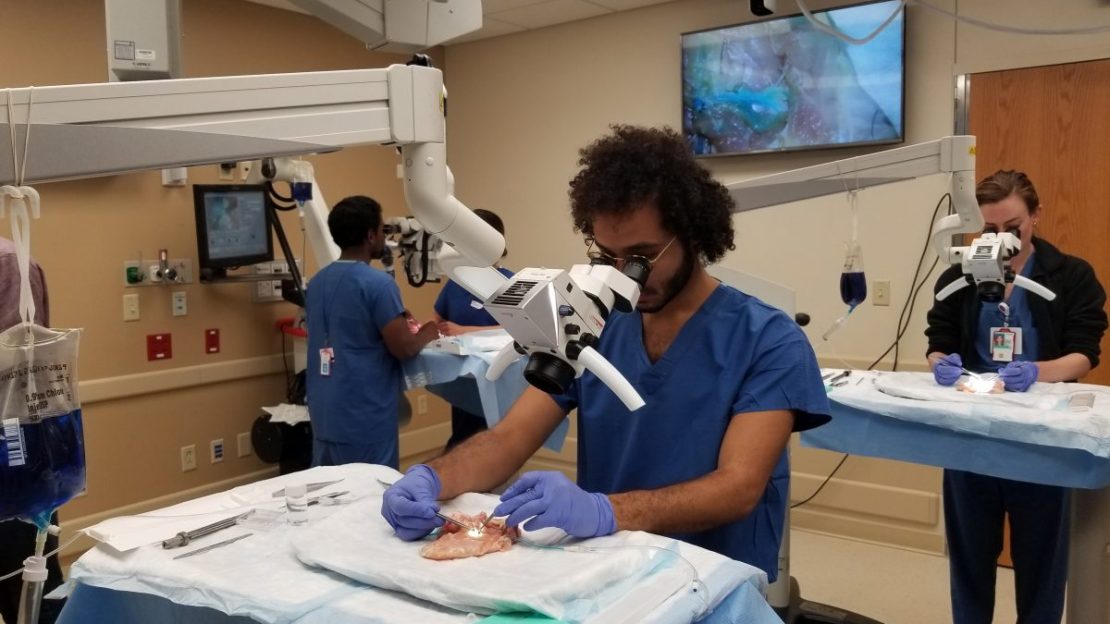John Tolley, January 30, 2019
Chicken thighs: they?re an integral part of the chicken and man-alive are they ever delicious (shh, don?t tell the chickens.) But that?s not all. Thanks to some enterprising doctors at the University of Wisconsin-Madison School of Medicine and Public Health, chicken thighs have found a new utility? in the field of microsurgery.
Sewing together miniscule blood vessels and nerve pathways, some as small as .5 millimeters, takes some serious practice - and then some more. The normal media for that practice, live lab rats, can be rather expensive and aren?t ideal for trainees of varying skill levels. Chicken thighs, though, prove to be an affordable and fairly accurate simulacrum for human tissues.
While the University of Wisconsin isn?t the first to use chicken thighs for microsurgery training, they?ve developed a unique training model that is easy to manage and provides medical residents with practice in a range of microsurgical tasks. By continuously infusing the femoral artery in the chicken with ?blue-blood? - a simple mixture of IV fluid and blue food coloring - from an elevated IV bag, the residents get the feel for live surgery, are afforded immediate feedback on the quality of their suturing, and hone their skills using clamps on engorged blood vessels.
Given that microsurgery is a precise and high-pressure job in the operating room, assistant professor of plastic surgery Samuel Poore, MD, PhD, says that it is imperative that residents get in as many practice runs in as possible. In his Plastic Surgery Basic Science Lab, residents of all levels train on the readily accessible Blue-Blood model.
?We are a year into this,? says Dr. Poore, speaking with University of Wisconsin news service. ?We?ve seen residents go from not being able to stitch blood vessels well at all, to being able to do it perfectly. It?s really working-and it?s really fun.?
The Blue-Blood training model was developed by Poore along with Weifeng Zeng, MD and Michael Bentz, MD. An outline of the model was recently published in the Plastic Reconstructive Surgery Global Open Journal.







